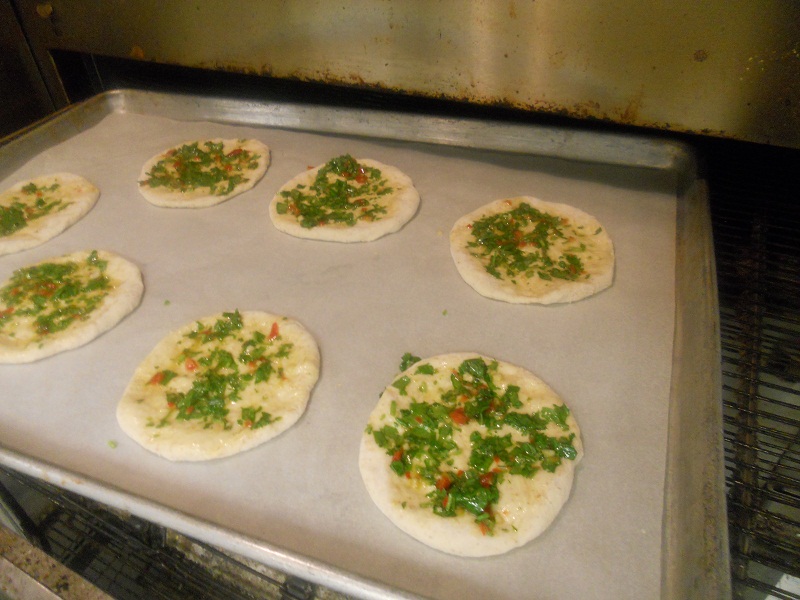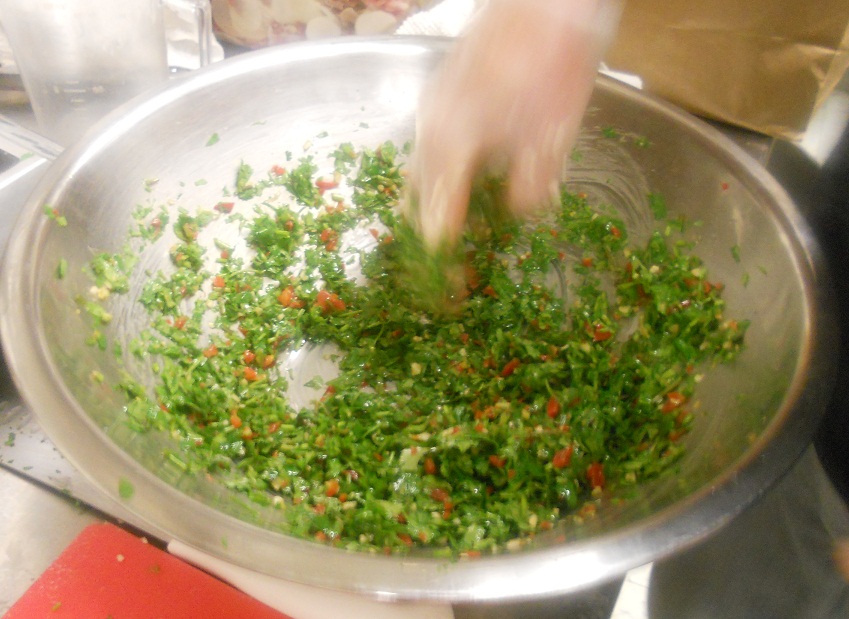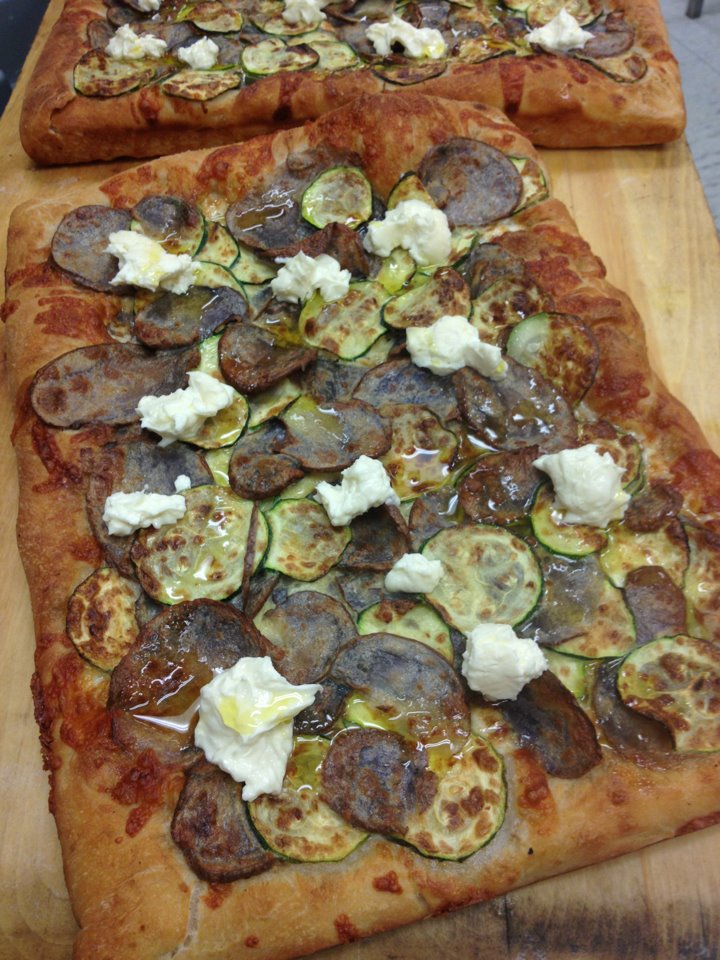
Yea, it’s cold standing in a giant parking lot in February but as I monitored the weather channels over the past few days, I saw a window of opportunity this Saturday to bake some killer breads and pizza variants. I made the pan pizza (above) that was my ode to a pizza I saw at the Campo di Fiori in Rome, Italy. This pizza carried sliced zucchini and Peruvian purple potatoes tossed in egg and Parmesano and baked on a wonderfully creamy and crunchy Sicilian-style dough with an aged mozzarella and provolone. The best part was the creamy Bellwether Farms Crescenza, from Sonoma County, California. In spite of the cold weather, we sold out in a few hours. Thank you sunshine, farmer’s market customers, Avalanche General Manager Joel Fair, the staff and Laura for hanging out in the cold.
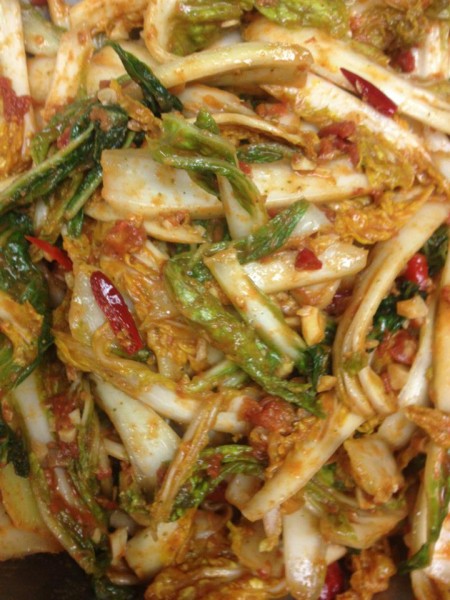
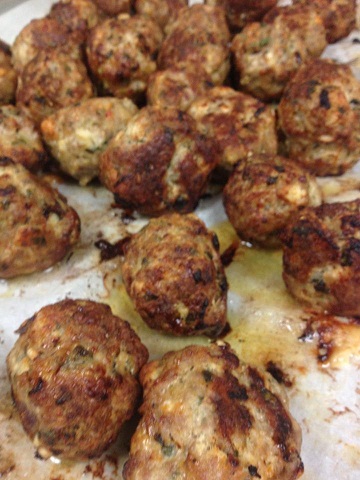
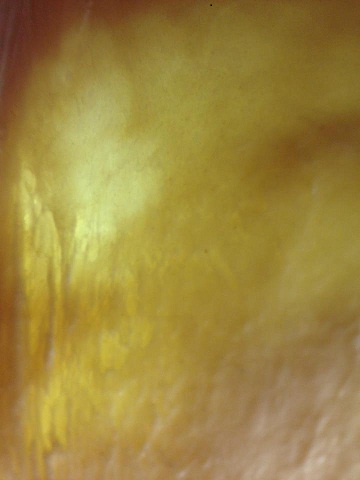
I recognize that my culinary efforts sometime skirt the realm of madness but I ignore it because the Italian kimchi I made (top left) was the BOMB! Just like Korean kimchi, I used the traditional combo of fish, garlic and chilies. My creation consisted of napa cabbage, roasted garlic, lemon zest, sun-dried tomato pesto, anchovies ground into a paste, some excellent imported Calabrian chilies and oil for a great zing. I used King Family pork to make some fabulous meatballs (above middle) with chopped garlic, pizza cornicione breadcrumbs, red onion, rosemary, fennel seed, fresh basil, pepper flakes, salt and pepper. I made a a poolish on Tuesday of almost 100% hydration that spent the night in my mixer. On Wednsday morning, I mixed a Bianca dough with a high protein flour and 70% hydration using the autolyse method. See the gluten net as I tested the window pane (photo above right).
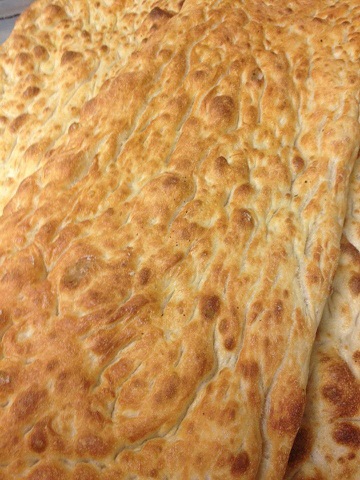
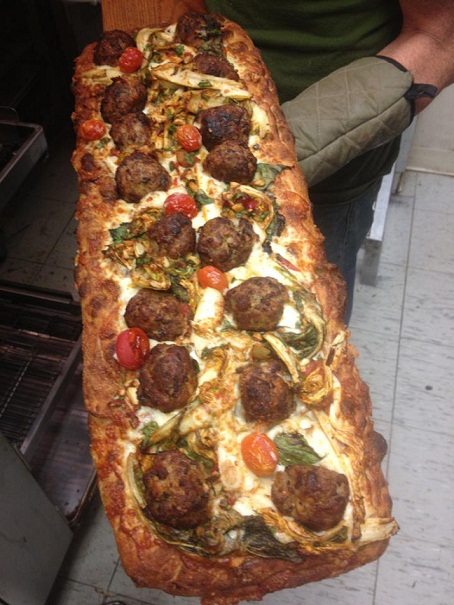
You may think this is high-maintenance but the glorious pizza these maddening combinations produced was spectacular! The Bianca dough came out great (above left) and I topped the dough with aged provolone and mozzarella, the Italian kimchi, fresh basil and fresh mozzarella for a big OMG! The pizzas sold out incredibly fast (above right). Man, you should’ve smelled these bad boys as they popped out!
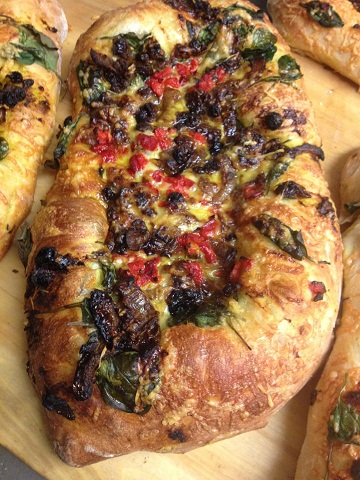

Along with the above monstrosity, I had time to put together my favorite combo: Gruyere cheese and curry (above left). I roasted onions with curry powder and then added raisins to re-hydrate. I used a 16-ounce schiacciata dough topped with fresh spinach, the curry mix and imported Gruyere! Holy Moly is all I can say. I also made a smaller but equally potent schiacciata with a harder dough called “Dr. Jekyll and Mr. Swiss” (above right). Ironically, this had absolutly no cheese made in Switzerland. The Finlandia Swiss and the stronger French Emmental paired with local ham, bacon and some shaved imported Serrano ham I just picked up.
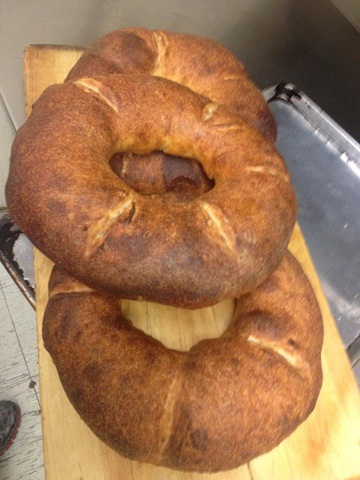
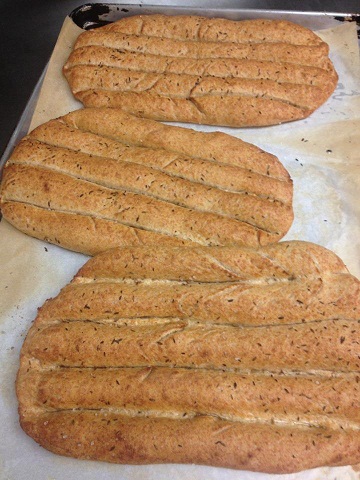
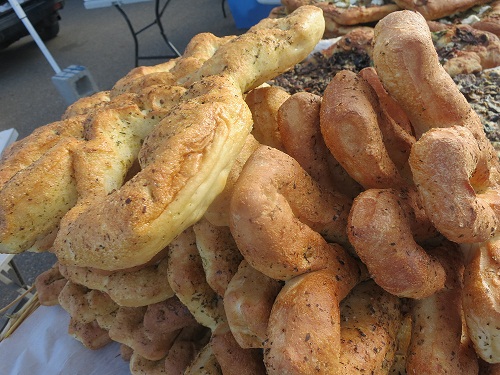
The breads I made included the massive Flintstone Wheel (a Tortano-style uber-couronne, photo top left), my lebanese Barbari using local Amish spelt from Shagbark Milling and Seed with extra virgin olive oil, sea salt and toasted cumin seeds (shown in the middle), and the sea salt and herb fougasse with extra virgin olive oil (above left).
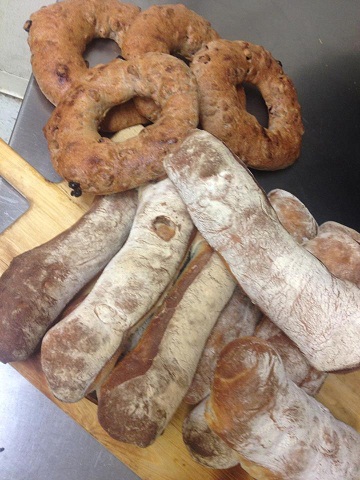
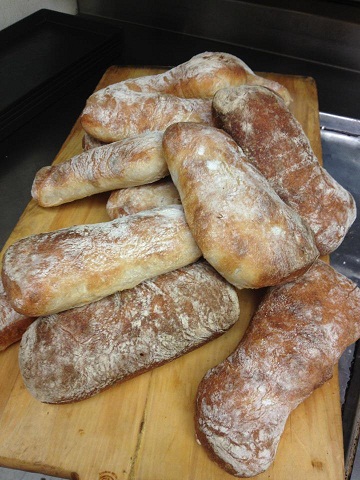

I just love making ciabatta loaves! This weekend we made some large loaves (left) with a local spelt couronne studded with cherry and walnut. We also made a small ciabatta (middle) into two types of sandwiches: the first an imported Serrano ham from Spain with arugula, pistachio pesto, tomato and imported brie, and the second a Caprese sandwich with fresh mozzarella, basil and tomato. I especially love looking at the crumb on ciabatta because of the irregular cells and the shiny gluten strands that indicate a killer loaf!
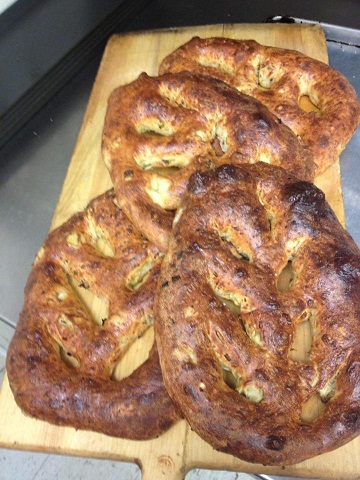
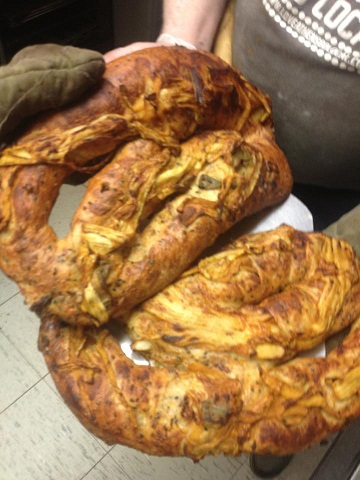
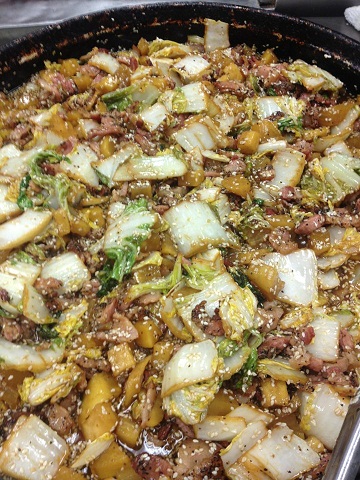
Last but not least is the always popular Leek-a-choke fougasse (above left) with leeks, artichoke and parmesan cheese. A very special fougasse I made this weekend included a Thai-inspired flair (above middle) and included pad Thai, roasted napa cabbage integrated with local peppered bacon, pickled local Amish daikon and tons of black and white sesame seeds. As the fougasse rested, I topped it with a four-month-old curried kimchi that I marinated in a Thai peanut sauce for three days. Man, talk about FLAVOR in capital letters!
Anyway, if you’re still with me and my mania, check out this video before the market at set-up time. I screwed up some introductions like saying ‘Fiore del campo” instead of Campo del Fiore and some other stuff but that’s what you get when an old man bakes all night. For those of you wondering, yes: my hands are sanitized.


